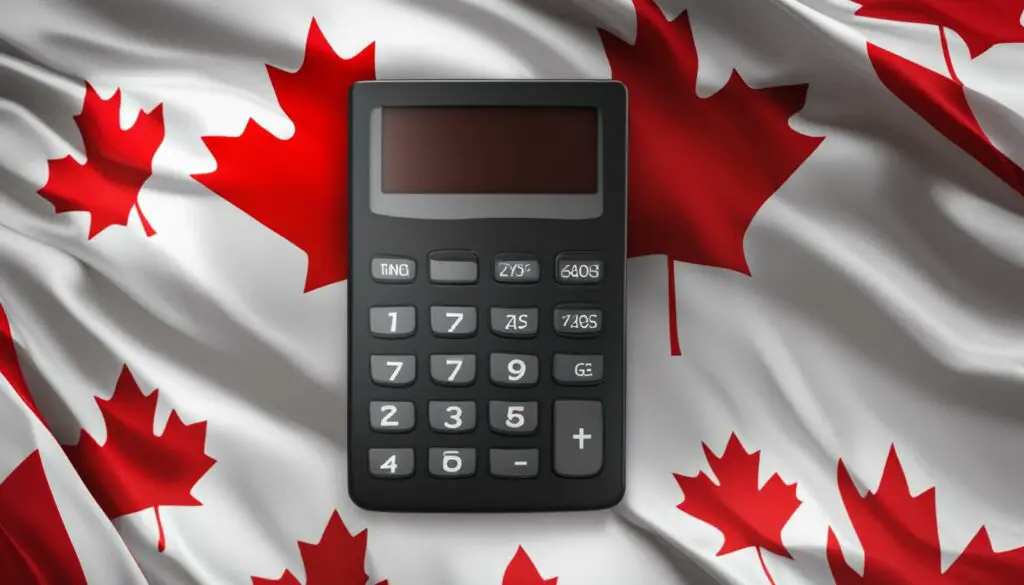Canadian Grades to GPA Conversion Guide
This comprehensive guide will explore the Canadian grading system and provide step-by-step instructions on converting Canadian grades to GPA. The Canadian grading system can be complex and varies across provinces. This guide aims to simplify the process and provide clarity.
Understanding the GPA conversion for Canadian grades is essential for various reasons. Canadian universities often require applicants to submit their GPA as part of the admission process.
Knowing how your grades correspond to the GPA system can help you gauge your academic performance and evaluate your eligibility for scholarships or other academic opportunities.
Understanding the Canadian Grading System
Letter Grades and Their GPA Equivalents in Various Provinces
The Canadian grading system utilizes letter grades to assess student performance. However, it is essential to note that the GPA equivalents of letter grades may vary across different provinces. To illustrate the differences, consider the following table:
| Letter Grade | GPA Equivalent |
|---|---|
| Letter Grade A+ | GPA Equivalent 4.0 |
| Letter Grade A | GPA Equivalent 3.9 |
| Letter Grade A- | GPA Equivalent 3.7 |
| Letter Grade B+ | GPA Equivalent 3.3 |
| Letter Grade B | GPA Equivalent 3.0 |
| Letter Grade B- | GPA Equivalent 2.7 |
| Letter Grade C+ | GPA Equivalent 2.3 |
| Letter Grade C | GPA Equivalent 2.0 |
| Letter Grade C- | GPA Equivalent 1.7 |
| Letter Grade D+ | GPA Equivalent 1.3 |
| Letter Grade D | GPA Equivalent 1.0 |
| Letter Grade D- | GPA Equivalent 0.7 |
| Letter Grade F | GPA Equivalent 0.0 |
The Differences in Grading Scales Across Canada
While the letter grades remain consistent, it is essential to be aware that grading scales can vary throughout different provinces in Canada. For instance, a particular grade in one province might correspond to an additional numeric value in another.
These variations can have an impact on GPA calculations and overall academic performance. Students should understand the specific grading scale and its corresponding GPA equivalents for their respective province of study.
Impact of Different Academic Assessments on GPA
Another essential aspect to consider when evaluating the Canadian grading system is the impact of different types of academic assessments on GPA. While most provinces have a similar structure, the specific assessment methods, such as exams, coursework, projects, or a combination, may differ.
The weighting and scoring criteria for these assessments can influence GPA calculations, making it crucial for students to comprehend how each assessment contributes to their overall GPA.
How to Convert Canadian Grades to GPA
To convert Canadian grades to GPA, follow these simple steps:
- Start by obtaining the grade scale used by your educational institution or province. Each province in Canada may have a different grading scale, so it’s essential to have the correct information.
- Assign numerical values to each letter grade according to the GPA scale. Typically, a scale of 4.0 is used in the GPA conversion process. Here’s an example of a common grading scale:
- Calculate the Grade Points for each course by multiplying the numerical value assigned to the letter grade by the course’s credit weight. For example, if the course is worth 3 credits and the letter grade is B, equivalent to 3.0 on the GPA scale, the Grade Points would be 3.0 x 3 = 9.0.
- To determine your GPA, divide the total Grade Points earned in all courses by the total number of credits completed. For example, if you have earned a total of 45 Grade Points in courses worth 15 credits, your GPA would be 45 ÷ 15 = 3.0.
Key Differences Between Canadian and US Grading Systems
Assessing the GPA Conversion for Canadian Universities
Canadian universities typically have their conversion methods and requirements for evaluating transcripts from international students. Students must know these guidelines and criteria to ensure accurate GPA calculation and a smooth admissions process.
🌟 Hey Students! 🚀 Ready for the ultimate experience? Join us on Studentsinside.com's Facebook, YouTube, WhatsApp, and LinkedIn. Click now for tips, fun, and success vibes! 🌈✨ #StudentLife #JoinUs
Calculating GPA in Canadian Universities: What American Students Need to Know
American students applying to Canadian universities must familiarize themselves with the GPA calculation process used in Canadian educational institutions.
In Canada, GPA calculation often involves slightly different indicators, such as credit hours, weighted courses, or grading scales.
Students must understand these nuances to accurately calculate and present their GPA when applying to Canadian universities.
Comparative Analysis of GPA Scales in North America
A comparative analysis of GPA scales in North America provides a broader perspective on the different grading systems used in the region.
Understanding the variations in GPA scales can help students contextualize their academic performance relative to their peers in both Canadian and American educational systems.
This analysis can also provide insights into how universities across the two countries interpret and evaluate GPA scores during admissions.
Step-by-Step Guide to Calculating Your Canadian GPA
Requirements for GPA Calculation
You will need certain documents and information to calculate your Canadian GPA accurately. Here are the essential requirements:
- Transcripts: Gather all your academic transcripts, including high school and college/university records.
- Course Credits: Take note of the number of credits or units assigned to each course you have completed.
Utilizing Canadian GPA Conversion Tools
Converting your grades to GPA can be complex, but tools and calculators are available to make the process easier. Here are some Canadian GPA conversion tools you can use:
- GPA Calculators: Online GPA calculators allow you to input your grades and credits to obtain your GPA.
- GPA Conversion Charts: Some institutions provide GPA conversion charts that help you determine the equivalent GPA for your grades.

Interpreting International Grades for GPA Conversion
For international students, converting their grades to GPA poses additional challenges. To interpret international grades for GPA conversion, consider the following:
- Educational System Differences: Understand the grading scale and system used in your country of origin.
- Grade Equivalencies: Research the conversion equivalencies provided by the institution or admissions office.
| Letter Grade | Grade Points |
|---|---|
| A+ | 4.0 |
| A | 3.9 |
| A- | 3.7 |
| B+ | 3.3 |
| B | 3.0 |
What Constitutes a Good GPA in Canadian Education?
Canadian universities use a GPA scale that ranges from 0.0 to 4.0, with 4.0 being the highest achievable GPA. A GPA of 3.0 or higher is usually considered competitive and demonstrates strong academic performance.
Some highly selective programs or institutions may require even higher GPAs, typically 3.5 or above.
It’s important to note that a good GPA is not the sole factor considered for admission to Canadian universities. Other criteria may include standardized test scores, letters of recommendation, personal statements, and extracurricular activities. These factors also create a holistic view of an applicant’s capabilities and potential.
While GPA requirements are an essential consideration, it’s equally important for students to focus on their overall academic growth and personal development.
Striving for excellence in academics and extracurricular activities will enhance university applications and contribute to a well-rounded education and future success.
FAQ
Q: What is the process for converting Canadian grades to GPA?
A: To convert Canadian grades to GPA, you can use a formula that assigns a numerical value to each grade and calculates the average. The formula varies depending on the grading scale used in your province. It is essential to consult with your school or educational institution for the specific conversion method.
Q: How do letter grades in Canadian provinces correspond to GPA?
A: The letter grades used in Canadian provinces have different GPA equivalents. For example, an A+ or 90% and above may be equivalent to a 4.0 GPA, while a B- or 70-72% may correspond to a 2.7 GPA. The GPA scale can vary slightly between provinces, so referring to your specific provincial grading scale for accurate conversion is essential.
Q: What are the differences in grading scales across Canada?
A: Each Canadian province may have different grading scales, impacting GPA calculations. For example, some provinces may use a percentage-based grading system, while others use letter grades or a combination. It is crucial to familiarize yourself with the grading scale used in your province to convert grades to GPA accurately.
Q: How does the type of academic assessment affect GPA?
A: Different types of academic assessments, such as assignments, exams, and projects, can have varying weightage in GPA calculations. Some assessments may carry more weight and contribute significantly to the overall GPA. It is essential to understand the grading criteria for each course and how each assessment is weighted to calculate your GPA accurately.
Q: What are the key differences between the Canadian and US grading systems?
A: The Canadian and US grading systems differ in letter grade cutoffs and GPA scales. While both systems use letter grades, the cutoffs for each grade can vary. Additionally, the GPA scale in Canada typically ranges from 0 to 4.0, while the US GPA scale can vary depending on the institution. Considering these differences when converting GPA between the two systems is essential.
Q: How can American students calculate their GPA in Canadian universities?
A: American students attending Canadian universities may need to convert their grades to the Canadian GPA scale. The conversion process involves determining the equivalent Canadian grade for each American grade and then calculating the GPA using the Canadian GPA scale. It is advisable to consult with your academic advisor or the university’s registrar for specific instructions on GPA calculation.
Q: How can I calculate my Canadian GPA?
A: To calculate your Canadian GPA, you need to determine the GPA value for each course grade, multiply it by the credit value of the course, and then calculate the average. The formula varies depending on the grading scale used in your province. You can use online GPA calculators or consult your school’s GPA conversion chart for assistance.
Q: What is considered a good GPA in Canadian education?
A: A good GPA in Canadian education depends on the individual’s goals and the specific university or program requirements. Generally, a GPA above 3.0 is considered good, and higher GPAs may be required for competitive programs or scholarships. Researching the GPA requirements of your desired university or program is essential to understand the expectations.








